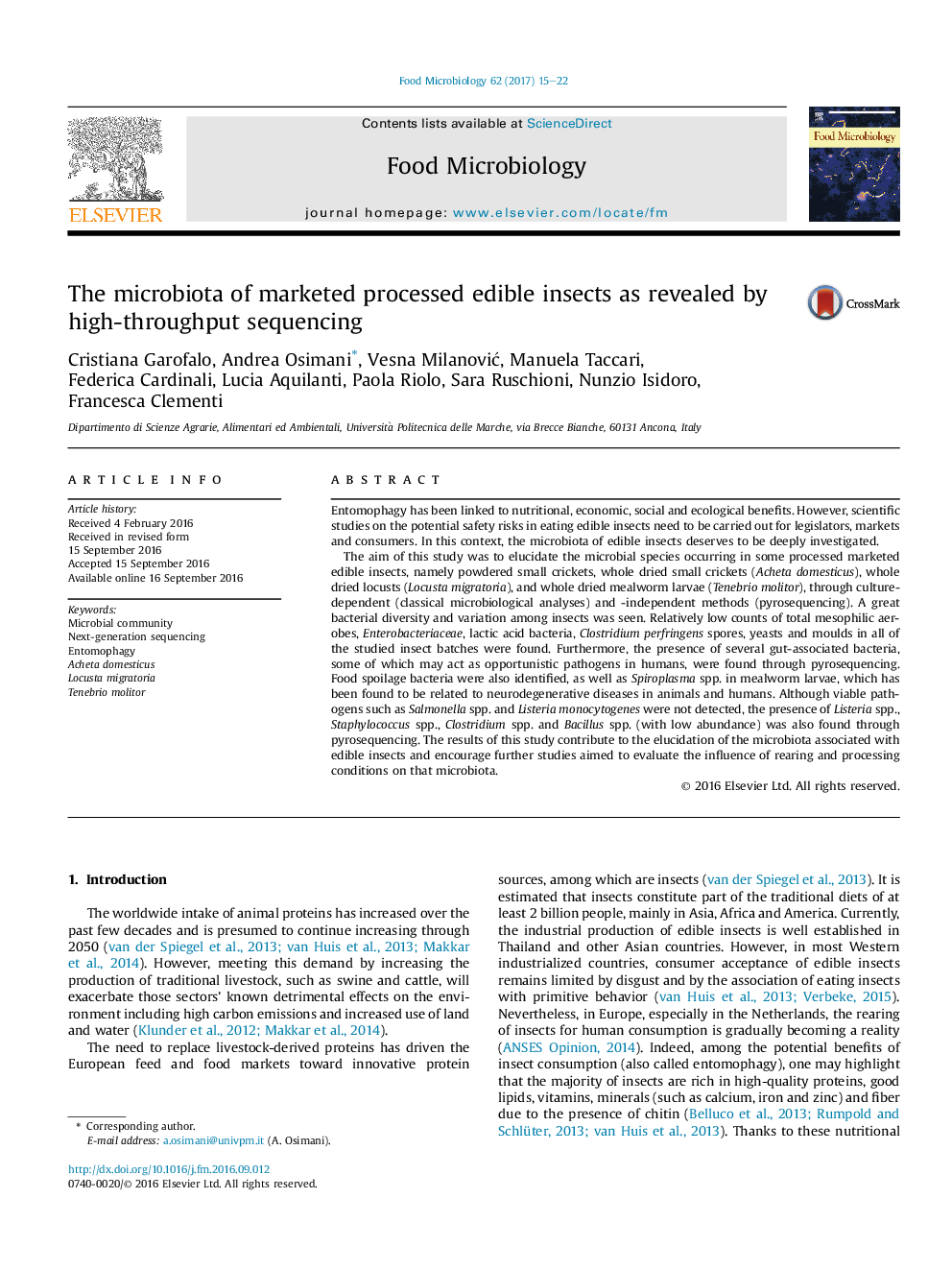| Article ID | Journal | Published Year | Pages | File Type |
|---|---|---|---|---|
| 4362527 | Food Microbiology | 2017 | 8 Pages |
•The microbiota of commercial processed edible insects was explored.•A combination of culture-dependent and -independent methods was applied.•A great bacterial diversity and variation among the insects was found.•Viable pathogens such as Salmonella spp. and L. monocytogenes were not detected.•Human opportunistic pathogens and food spoilage bacteria were seen.
Entomophagy has been linked to nutritional, economic, social and ecological benefits. However, scientific studies on the potential safety risks in eating edible insects need to be carried out for legislators, markets and consumers. In this context, the microbiota of edible insects deserves to be deeply investigated.The aim of this study was to elucidate the microbial species occurring in some processed marketed edible insects, namely powdered small crickets, whole dried small crickets (Acheta domesticus), whole dried locusts (Locusta migratoria), and whole dried mealworm larvae (Tenebrio molitor), through culture-dependent (classical microbiological analyses) and -independent methods (pyrosequencing). A great bacterial diversity and variation among insects was seen. Relatively low counts of total mesophilic aerobes, Enterobacteriaceae, lactic acid bacteria, Clostridium perfringens spores, yeasts and moulds in all of the studied insect batches were found. Furthermore, the presence of several gut-associated bacteria, some of which may act as opportunistic pathogens in humans, were found through pyrosequencing. Food spoilage bacteria were also identified, as well as Spiroplasma spp. in mealworm larvae, which has been found to be related to neurodegenerative diseases in animals and humans. Although viable pathogens such as Salmonella spp. and Listeria monocytogenes were not detected, the presence of Listeria spp., Staphylococcus spp., Clostridium spp. and Bacillus spp. (with low abundance) was also found through pyrosequencing. The results of this study contribute to the elucidation of the microbiota associated with edible insects and encourage further studies aimed to evaluate the influence of rearing and processing conditions on that microbiota.
